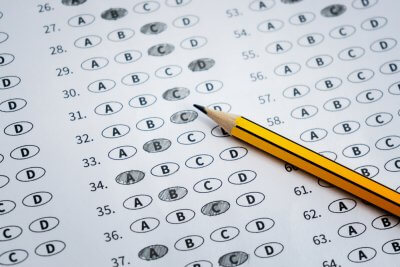Apply Now
Current Students
Apply Now
Current Students
Multiple-choice questions are a staple of education. Multiple-choice questions are simple and easy ways to assess basic knowledge such as the ability to identify concepts or define terminology. One of the downsides is that they’re not very good at assessing higher orders of critical and creative thinking about the subject at hand.
knowledge such as the ability to identify concepts or define terminology. One of the downsides is that they’re not very good at assessing higher orders of critical and creative thinking about the subject at hand.
So what if we flip the multiple-choice question on its head? What if, instead of constructing a stem and then having the student choose the right answer from various distractors, we merely provide the student with a list of potential answers and ask them to provide an appropriate stem?
The student would then have to think creatively about what the items listed have in common, and what can make one item stand out from the others. Rather than having to merely recognize that one item stands out for the reason provided, they’d have to draw upon their knowledge to formulate a reason. This qualifier of a reason is important. There is no one right answer to this type of question, which provides students the freedom to make creative connections between ideas.
Do you find this idea interesting and want to learn more? Check out AP Psychology teacher Blake Harvard’s article Reverse Engineering the Multiple-Choice Question.
If you’d like assistance with this or anything related to instructional design don’t hesitate to contact us at learning_design@davidsondavie.